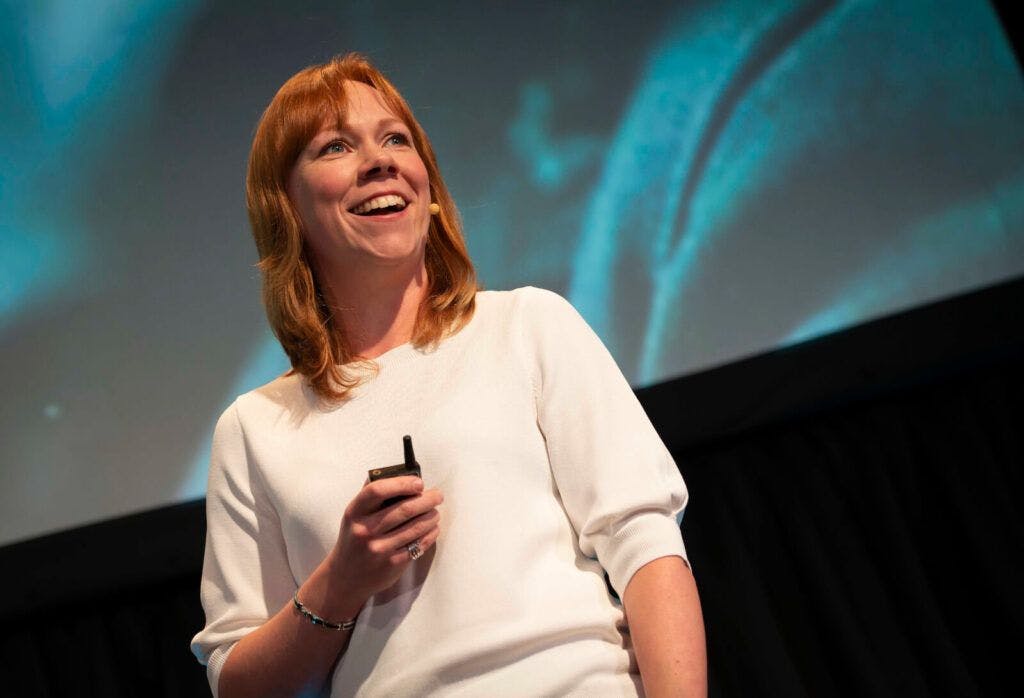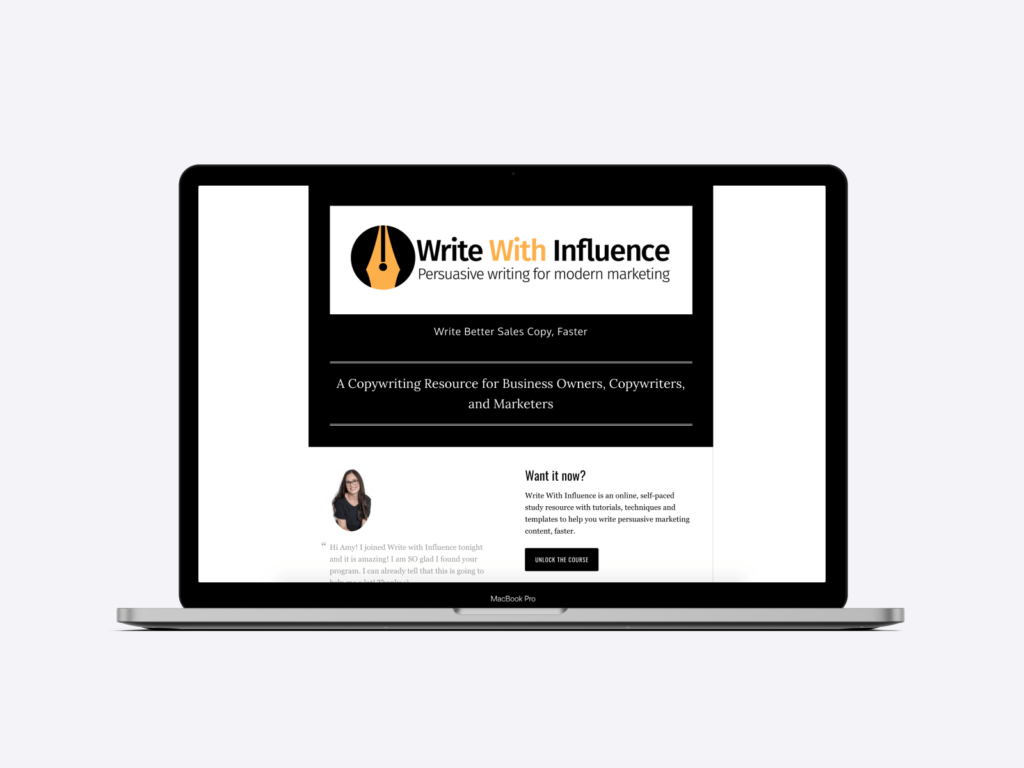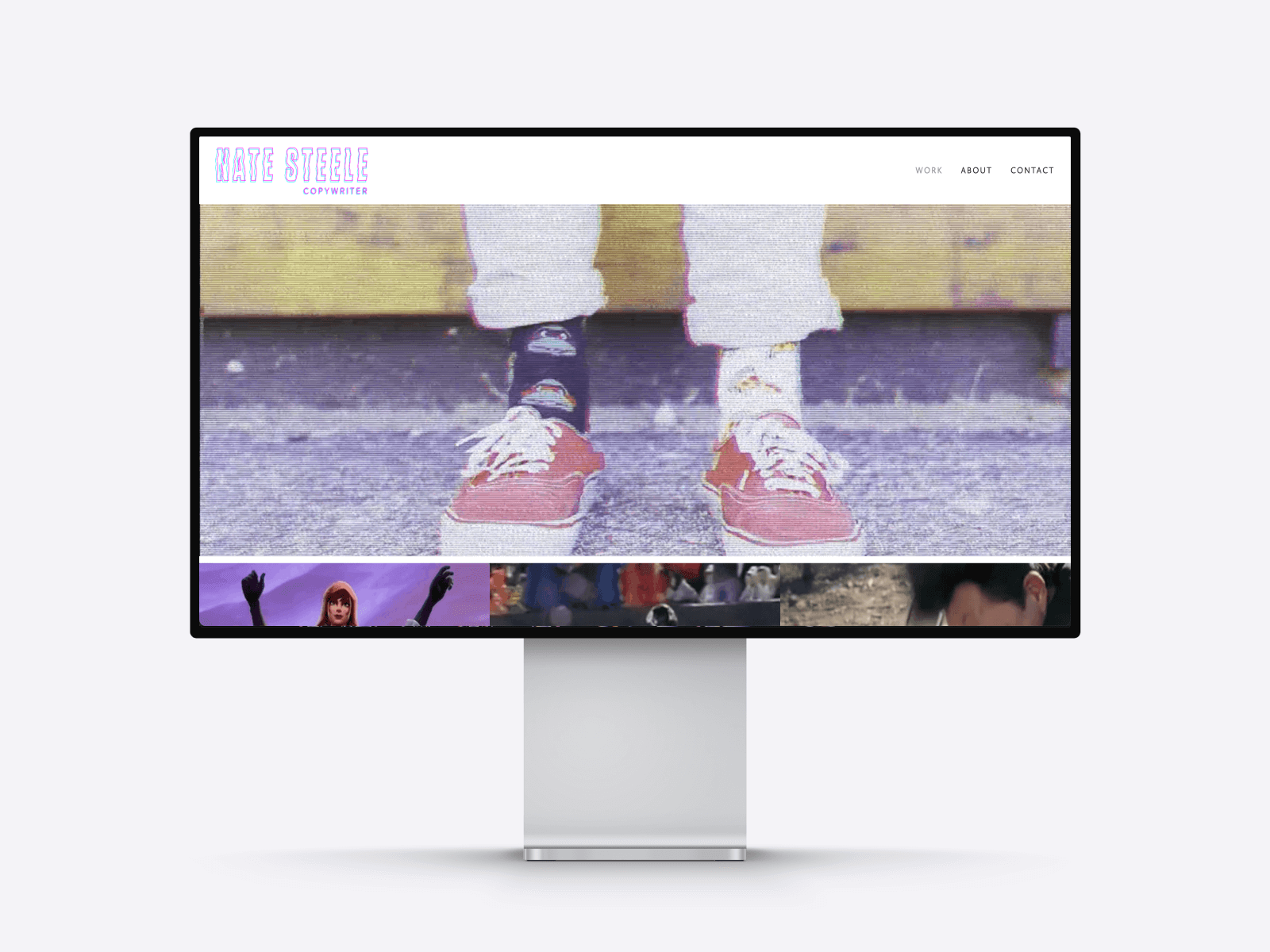Becoming a Successful Copywriter And Content Trainer - Interview with Amy Harrison
If you enjoy reading and learning about copywriting, you must have heard about Amy Harrison already. Whether it’s from her hilarious YouTube channel, podcast, blog posts, conference appearances… Or her popular online course teaching the ins and outs of writing sales copy: Write with Influence. Amy has more than 10 years of experience in copywriting and a huge list of amazing resources for those aspiring to master the art of writing copy that converts.
We sat down to talk and Amy shared more about becoming a copywriter, her creative process when approaching a new project and why copywriters need to have a writing portfolio. She also shared some great tips for beginners and junior copywriters that would help getting started.

Let’s talk about your career first. You trained as a screenwriter. How did you get into copywriting?
I studied screenwriting for 3 years and I got my degree in that. After that I decided that I didn’t want to write —I’d had enough of writing continuously and as I was only 20-21, I also thought I first needed some experience before I wrote anything else. So I went to work in Canada for a year and had an absolute blast.
In 2006 I came back, moved to Brighton and started working for a small private investment firm. They were buying and selling websites and businesses. It was something completely different: I was working as a project manager and I also wrote content for them. We’d do the research and buy a business, then repackage it to make it look attractive to investors and do everything we could to attract investment. I did that for a couple of years.
It was a combination of being focused on the business side of profit and buying and selling —but there was also a lot of “making it attractive” and working with design and content in order to do that.
And then I desperately wanted to start writing again. I thought: “I want to write for a living and I wonder if someone would pay me to do that.” That was my entire business plan. So I quit my job and just started writing content. This was back in 2008.
Since then my career has taken many different paths to what I do today.

And how did you get from copywriting to actually teaching it? Can you tell us a bit more about Write With Influence?
When I first started, I was doing a lot of content marketing for myself including blogging and guest posting. As I published more content, explaining the techniques I used, I started to be approached by companies looking for training.
Early on, I did a lot of training for the British Council throughout Europe. This was a fantastic crash course in learning how to teach because for many workshops,English wasn’t the first language of attendees. Not only was this incredibly humbling—because the standard of English was superb—but it made me really scrutinise the exercises I had designed. I had to revisit all my assumptions about what a word or phrase would mean, and make sure that I could teach persuasive principles in a way that would make sense across countries and cultures.
Over the years, I created lots of teaching content and put that into Write with Influence, which is the online course that I have.
And which one do you actually prefer? Teaching copywriting or writing itself?
It depends. With teaching, it’s great to see people “getting it” and when you see them engage. I really enjoy it. But I’m also quite introverted and I find it exhausting to be on my feet, talking to 15-20 people all day long. There’s a nice payoff and I do like doing it, but… I also know that if I’m writing, I can go at my own pace and I don’t have to constantly communicate what I’m doing.
That’s one of the reasons why I wanted to do the course: because I love being able to help people. But physically, it’s just not possible to teach or reach as many people as I would like!.
When you get a new project, what is your creative process of getting started?
If we take a new product launch, for example, the first step is always research: I want to know everything about the product. So if it’s a course, I’ll take the course. I also often do surveys with the target audience if I can, to find out what their biggest challenges are. I want to find out:
- What problem does the product solve?
- Why does the problem exist?
- What does it look like in people’s lives? How does this problem show up? How do people even know they have a problem?
- Why is it difficult to solve? Why have they not solved it yet?
- What are the other alternatives that they’ve tried to do, but what isn’t working?
And then I build what I call the copywriting snapshot. It’s a 15-20 page document that has everything in it. It starts with all the important but often overlooked details of the offer: how long is the course for example, what’s the price, what are the list of features etc. These are the things that are really important but if you sit down and try to just write a sales page or email straight away, you’ll forget them. So it’s nice to have all those details in one place.
Then I’ll break it down further. I try to look for themes, look for angles and other reasons that might not be obvious in terms of what people will really get out of this product. What is the real transformation and value to someone’s life? That’s what I want to communicate.
For example, right now I’m working on a product launch for a video course that teaches software development teams how to use story points to create estimates. I know that thevideo course solves the upfront problem of helping people understand a difficult subject. But I found from my research that what people also really love is that it gives them the confidence to coach other people. So it’s not just about them learning themselves —and that will be a key theme we’ll use to resonate with our target market.
So first I start with research, getting everything out of my head and onto paper and then I’ll begin to look for, and group things like challenges and benefits. That’s how you start to build this big picture, the complete sales narrative which you can then put together into the final copy.

What is the biggest challenge you typically face?
My biggest challenge is probably that I never want to say no to anything, but I’m getting better at it. I’m usually booked 4-6 months out, which is frustrating because sometimes something will come up, which I think would be a great product or project, but I just can’t take it on.
Another challenge is finding the time to market my own things. I think that’s a common problem that people working for themselves have. But I’ve got plans to outsource more... I have someone who works with me, who will start taking over more promotions because I want to let more people know about the course.
If someone is just starting out, let’s say a junior copywriter… Would you recommend them to find a niche? Either the industry to write for or the format of copy they write?
It’s a good question. There are benefits to choosing a niche. If you choose a niche, it’s easier to focus your marketing, because you know exactly who your target audience is. It’s easier to onboard new clients because you’re familiar with the industry and the type of products. And you can set yourself out as the copywriter for this industry, which can make it a little bit easier if people are looking for a specialist.
The challenge you have is that if you choose an industry, it has to be deep and broad enough, so you can still find a lot of variety in how you sell things. You might be writing for lots of people who are in competition with each other. Then they may say: “I know you did all the marketing for my competitor, how do I know that the content you write for me is going to be different and will be able to compete?”
For me personally, I just couldn’t decide on a niche in terms of industry. I was interested in everything.
What I would say is: if there’s nothing that really grabs you, don’t worry about it. You definitely don’t need to choose a niche. But pay attention to the things that you enjoy. In terms of the industries, the types of clients and also the type of writing as well.
As I said before, I only do sales content. I don’t do articles, I don’t do SEO copywriting. And that’s simply because sales copywriting is what I enjoy the most.
Keep note of what you enjoy doing and be conscious of that. Because if you’re working for yourself, you get to design the work-life that you want. So don’t do something that you don’t want to do.
Do you think having a portfolio or personal website is important for copywriters?
Yes, absolutely! The first thing that people will do, whether you meet them online or in person, is that they’re going to look you up. That’s their first impression of you online. It’s important to showcase who you are, what you do and how you serve people.
And what do you think makes a good portfolio or writer website?
Obviously, you want to showcase your best work. But I think if you’ve got something that can show a variety of techniques and styles that’s the best. Showcase a product you’ve worked on and how you pulled out the benefits.
How you identified the biggest challenges and how you described those challenges. Anything that shows the client what it’s going to be like to work with you, and the style you work in.
Are there any typical mistakes you’ve seen in writer websites?
Us copywriters specifically, we’re so good at describing the benefits of other people, but we tend to overlook the value of what we bring to the table. It’s what we advise our clients against, but we tend to be a little bit more functional in terms of describing what we can do.
So we might say: “We’ll create great content that engages people, content that’s compelling, etc.” But feeling like you can be bold enough to put a little bit of your personality in there and explaining how it is that you work would be beneficial. If a client has never worked with copywriters before, they may not know what the process is like. Just having information that strips away the mystery of what it’s going to be like to work with you can build confidence in a prospect
When people visit your site, they really need to feel like they know you and they should start to see you as someone they would like to work with. As opposed to just any copywriter.
Would you have any advice for juniors or complete beginners? What should they do for their website or portfolio? Is it even worth it for them to build one?
Yes, it is! The brilliant thing about copywriting is that you could write about anything and showcase what you’ve done. You could pick a product and say: here’s how I would sell this product.
Obviously, if you’ve got examples from real businesses, that’s going to be better, because it shows credibility. I know that some writers say that you should never work for free —and I can understand why they would say that—, but when I first started out, I did skill swaps to build my portfolio. I got photography done for my site and I got design work done and I would then offer copywriting. So it did two things: I was able to get things in return that I couldn’t afford when I first started out, but it also meant that I could build up my portfolio.
With every interaction that you have, in as much of a client setting as you can do, you’re building up your network referral as well. So then people can say “hey I worked with this copywriter” and then that branches out. Just do whatever you can to get those projects up on your portfolio.
Thank you for the interview, Amy!
Make sure to follow Amy on Twitter and check out her YouTube channel, AmyTV. And if you want to learn more about her online course, visit writewithinfluence.com!
Build your own copywriter portfolio with Copyfolio!
If you're looking for a quick and easy way to build a copywriter portfolio website, you should check out Copyfolio. It takes away the intimidating design and coding decisions of website building and lets you create a stunning site in a matter of minutes.
Choose a template, fill your pages with copy, add your projects & you're done. One-click mockups will help your frame your images professionally, while global color palettes and font presets make it easy to change the look of your site in a second.
Get started for free and create your copywriter portfolio today!




